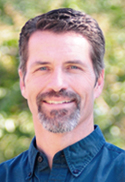Winter 2021
Industry Perspective: Langue who? A legacy of almond varieties
Languedoc, Lewelling and Harriott. Are these people’s names, places or abstract word combinations? Actually, they’re all varieties of almonds, some dating back to 1843. With the No. 1 almond variety planted in California originating from 1879, the Nonpareil has stood the test of time. It’s amazing that such an old variety is still so widely planted. Many of the siblings and cousins of Nonpareil planted in California around the same time have fallen out of favor for one reason or another.

The Harriott bloomed too early, and the nuts ripened inconsistently. Lewelling produced a lot of doubles. Languedoc didn’t produce well and was prone to alternate bearing. Slowly but steadily, the 20-plus heirloom varieties in the Wolfskill almond collection became less popular. But why did the Nonpareil survive? What was it about that one sprout from the root of a budded almond tree on the A.T. Hatch Ranch in Suisun, California, that made it survive?
It’s strange how one seedling survived out of thousands and is now the most widely planted variety in California – if not the world.
It could be the paper shell, the flat, ovate shape of the nut with its base sloping ventrally, creating almost a right angle to its axis that made it distinct. Or it could be the smooth pellicle that serves to its versatility as a nut that is good for blanching, roasting, flavoring or raw snacking. As noted in the USDA Bulletin #1282, “Almond Varieties In The United States,” reprinted August, 1925, “The Nonpareil is the best of all varieties in California. As it is popular in the market, there is apparently no danger of overproduction of the variety.”
As I was observing this ancient collection of almonds at the University of California (UC), Davis, Wolfskill Experimental Orchard with UC breeder Tom Gradziel, I couldn’t help but try to pronounce some of the names out loud and picture what the valley must have looked like in California at the turn of the last century.
SansFaute, Almendro de la pie, Goldenstate, Bigelow.
All have a story, all are a part of the history of almond cultivation in California, and all are still used today by Gradziel in his crosses. As new selections of almonds make their way to the market, many of them owe their characteristics to grandparents such as Jordanolo, IXL and La Prima. The Winters variety, for example, bred by Gradziel, has Harriott as one of its grandparents.
Keeping this historic collection of almond varieties is important not only for future breeding, but for the genetic diversity it provides as they have proven to survive over one hundred years. After years of neglect, Gradziel has decided to re-propagate the collection and keep it at the Wolfskill experimental station in Davis. As I was climbing through the branches of these historic trees, trying to find a branch from last year’s growth to cut for propagation, I thought of what growers today would say about the strange growth, the twisting trunks or the brittle branches. Grower friendly? I would say not, which is another reason why these varieties became less desirable.
New varieties will continue to be introduced, many of them owning a lineage to the old varieties being re-propagated from the few shoots I could find climbing in the branches. However, looking at the landscape of the almond industry in California, a quote from the old USDA Bulletin #1282 predicted the future so eloquently that it still stands as truth today. The writer observed that old Nonpareil tree and said, “It seems that in the absence of a better variety, growers will do well to plant as many Nonpareil trees as possible.” Growers must have taken this advice seriously because after 142 years and hundreds of varieties, growers are not planting Languedoc, Lewelling or Harriot, they are planting Nonpareil.
– Tom Burchell, Burchell Nursery









